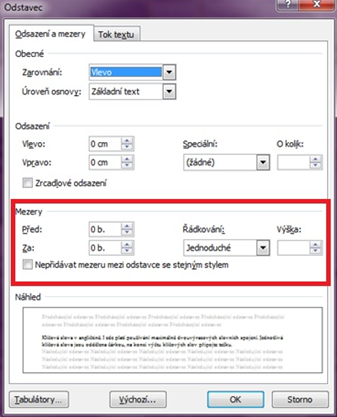The editor’s office only accepts contributions which correspond to the magazine’s priciples and core values. A contribution must be exclusively submitted for publication in Sociální práce | Sociálna práca or its English edition Czech and Slovak Social Work. Authors are asked not to submit more than two articles/contributions per year.
Manuscripts and review proceedings
Academic articles. Within the scope and for the purpose of the journal, academic articles refer to an exploratory study or a review study (theoretical, historical research, etc.). The contribution (article) will be accepted for review proceedings provided that the author systematically uses relevant resources throughout their work, clarifies their research methodology, and presents the results with respect to the research objectives. This is assessed within the publication proceedings by two independent peer reviewers.
Considering the specialized professional nature of the journal, we prefer articles which, alongside the aforementioned aspects, also contain practical dimensions in which the author clarifies the relevance of their findings within the context of social work. This is examined and assessed within the publication proceedings as “professional adequacy” of the article by one of the members of the editorial board.
Manuscripts should be structured in compliance with the abstract structure required by the editorial board (i.e. goals, theoretical background, methods, results, and implications for social work).
Review proceedings are bilaterally anonymous and carried out by two independent reviewers. Articles are assessed in terms of content as well as form. If necessary, the article may be returned to the author(s) for re-writing or amendment. Based on the reviews, the article will either be accepted or rejected. Disputable cases are settled by the editorial board of the individual issue. Two versions of the manuscript should be submitted to the editorial office via e-mail. One of these versions should be free of any information which would lead to the identification of the author. The other one should be a complete version of the article.
Decision on release
The author is notified of the result of the publication procedure (assessment of professional adequacy and review procedure) no later than eight months from the date of receipt of the article. During the publication process, the author receives four reviews.
Requirements for a manuscript
The following are our expectations as to the formatting required for the articles. We ask authors to amend their manuscripts in compliance with the indicated requirements prior to their submission for the publication proceedings.
The body of the article
The maximum length of your text (including its title, biography, abstracts, key words, the main body, list of sources, explanatory notes) should not exceed 9,000 words.

The entire text (title, abstracts, explanatory notes – briefly speaking, the entire document) should be in Times New Roman font, size 12, single line spacing, paragraph spaces before and after 0 p. (see figure on the left). The title should not be in all caps or small caps. Page margins 2.5 cm on all sides of the text. Text, figures, charts, diagrams all left aligned. No page numbering.
The text should be divided into appropriate paragraphs following the logical structure and arguments mentioned. The text may be divided into sections/chapters. The chapters may be differentiated graphically, especially if they have a certain structure. Use three types of sub-/titles only (three levels of chapters). The chapter titles may not use underscored font for graphical reasons. An example of a graphical division of a chapter:
SOCIAL EXCLUSION
Dimensions of social exclusion
Economic dimension
Political exclusion
We kindly ask authors to pay special attention to accurate work with the literature they use, primarily the referencing. Throughout the text, the reference should be to the author’s last name and year of release; these should be separated with a comma; e.g. (Korda, 2002). If a quotation is used, the page(s) should be indicated after a colon without a space; e.g. (Korda, 2002:45).
A list of sources must be included at the end of the article; the list should only include the literature referenced in the article. The list must be sorted in alphabetical order. Where references are made to several works by the same author, the list should be arranged chronologically with the latest work at the top. If several texts of the same author were released in one single year, please specify them by adding “a”, “b”, etc. (also see “Sources” below).
Tables, diagrams, graphs, charts and images
Tables should not exceed 14 cm in width. Font size should be at least 8-10. For graphs, please use bright contrasting colors, various structures might be used (please note, the magazine is printed in black-and-white only).
Sources of tables, diagrams, graphs, charts, and images should only be mentioned if you are not their author and they were reproduced or edited by you. For the form of referring to the source, see below.
Inserted tables, diagrams, graphs, charts, and images should be numbered and named as follows:
Table 1: Name of the Table…
Space 1 row
Space 1 row
Source: Author, 2012:15
Graph 2: Name
Space 1 line

Space 1 line
Source: organisation XYZ – statistics
For images and diagrams please apply the same approach as for tables and graphs.
Please make sure that every graphical element (table, graph, diagram, image) delivers a clear and well-arranged message. Please bear in mind that the magazine is in black-and-white. For instance, as regards to graphs, select the most suitable type so that the displayed variables are legible and clear (see the example below).


Sources
Sources are the works that the author(s) used to gather data and opinions.
A list of sources should be at the end of the article. A complete account of the sources you used, sorted in alphabetical order by the name of their authors, should be included. We have recently decided not to differentiate individual parts/sections in the list of sources (internet sites, laws, church documents, and others).
Please follow the rules derived from the standards for referencing and citations by ISO 690, see below.
All English titles in the list of sources (articles, magazines, journals, monographs, articles in journals and anthologies, etc.) should have their first letter capitalized except for (in)definite articles, prepositions, and conjunctions (e.g., European Journal of Social Work, not European journal of social work).
For works written by a collective of authors, if 1 to 3 authors contributed to the work, mention all their names; if 4 and more authors contributed, please mention the first three and add the “et al.” abbreviation.
1. Electronic sources
Specific categories are used to refer to electronic information sources. The following specific categories are mandatory:
| Medium type, carrier | the most frequent specification is “[online]” |
| Quotation date | [3. 1. 2015] |
| Availability and access | Available from: |
Difference between printed and electronic source:
a) printed:
General:
AUTHORS. Year. Name. Location: publisher.
b) electronic:
General:
AUTHORS. Year. Name [online]. Location: publisher. [Quotation date]. Avalailable from:
2. Monographs
a) printed (hard copy)
General:
AUTHORS. Year. Name. Location: publisher.
b) electronic:
General:
AUTHORS. Year. Name [online]. Location: publisher. [Quotation date]. Avalailable from:
3. Chapters in monograph
a) printed (hard copy)
General:
AUTHORS. Year. Contribution title. In: Authors/editors of the parental document (Eds.) Title of the parental document. Location: publisher, page(s).
b) electronic:
General:
AUTHORS. Year. Name [online]. Location: publisher. [Quotation date]. Avalailable from:
4. Articles in journals
AUTHOR. Year. Article title. Magazine/Journal title, Volume (issue number in the individual year), page(s).
5. Legislation
The citation of legislation, church documents, and archival documents is not governed by ISO 690. The usage for reference to and citation of these documents in the Sociální práce/Sociálna práca magazine is as follows:
General sequence of individual citations of a legal document:
| Identification of the document type (e.g. act) |
| Sequence number (under which laws it has been incorporated into) |
| Year of issue |
| Abbreviation “Coll.” |
| Title |
E.g., Act No. 108/2006 Coll. on social services.
6. Church documents, files
PAUL VI Octogesima adveniens (1971). In: Sociální encykliky (1891–1991). Praha: Zvon, 261–296.
BENEDICT XVI Caritas in veritate. Kostelní Vydří: Karmelitánské nakladatelství, 2009.
Sociální encykliky 1981–1991. Praha: Zvon, 1996.
Quotations from the Bible should indicate the book, chapter, and verse. Abbreviated forms are acceptable, i.e., abbreviation of the book, chapter number, and the verse.
